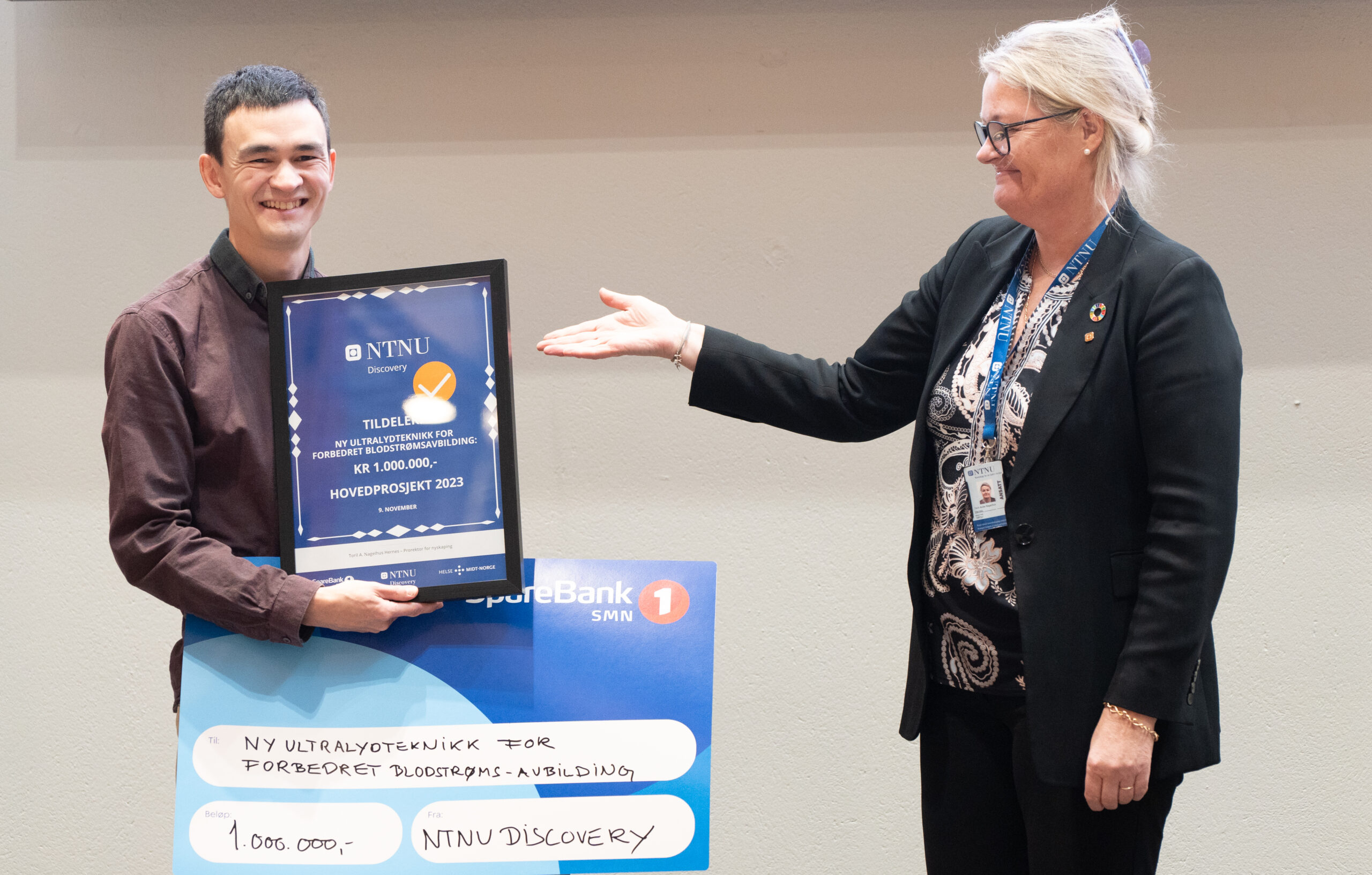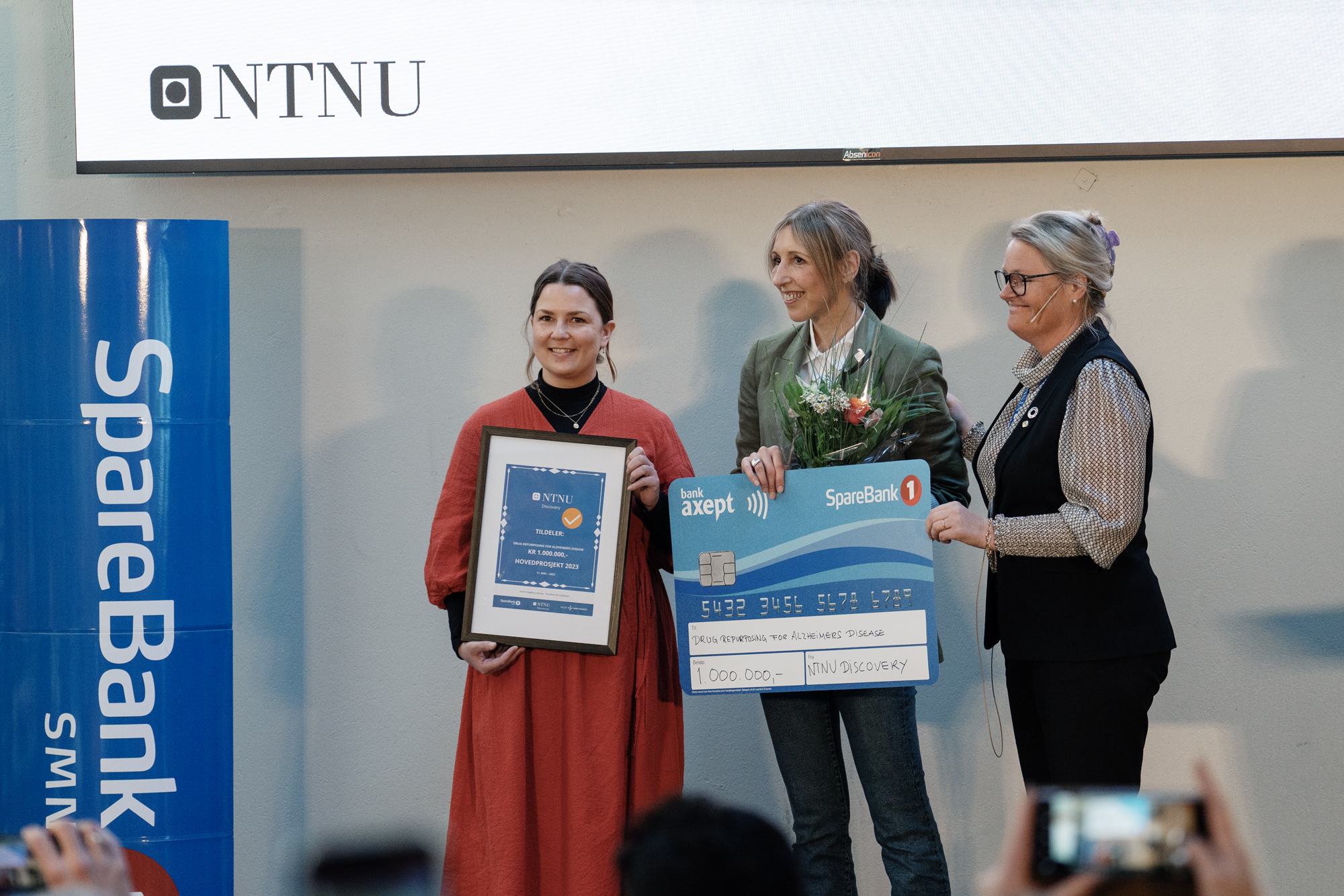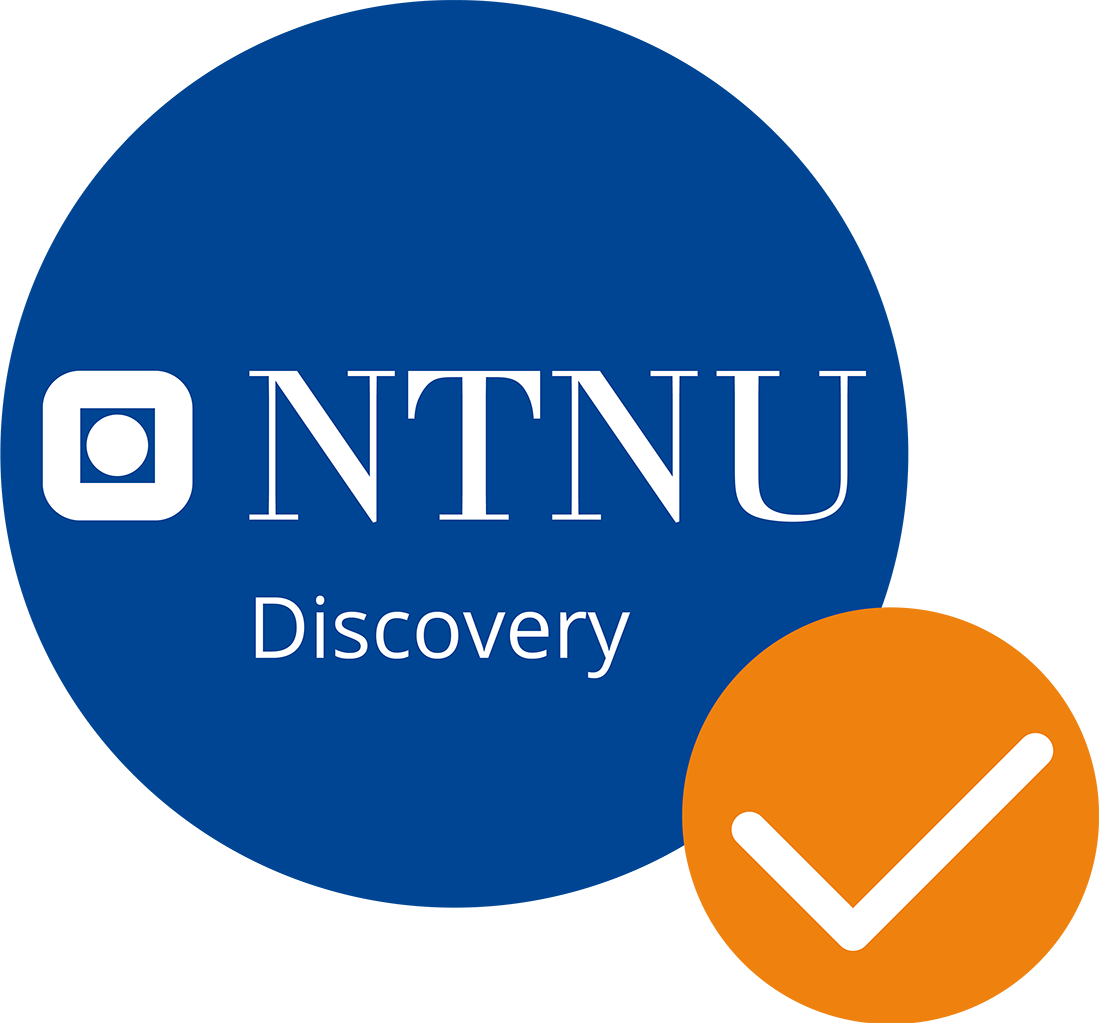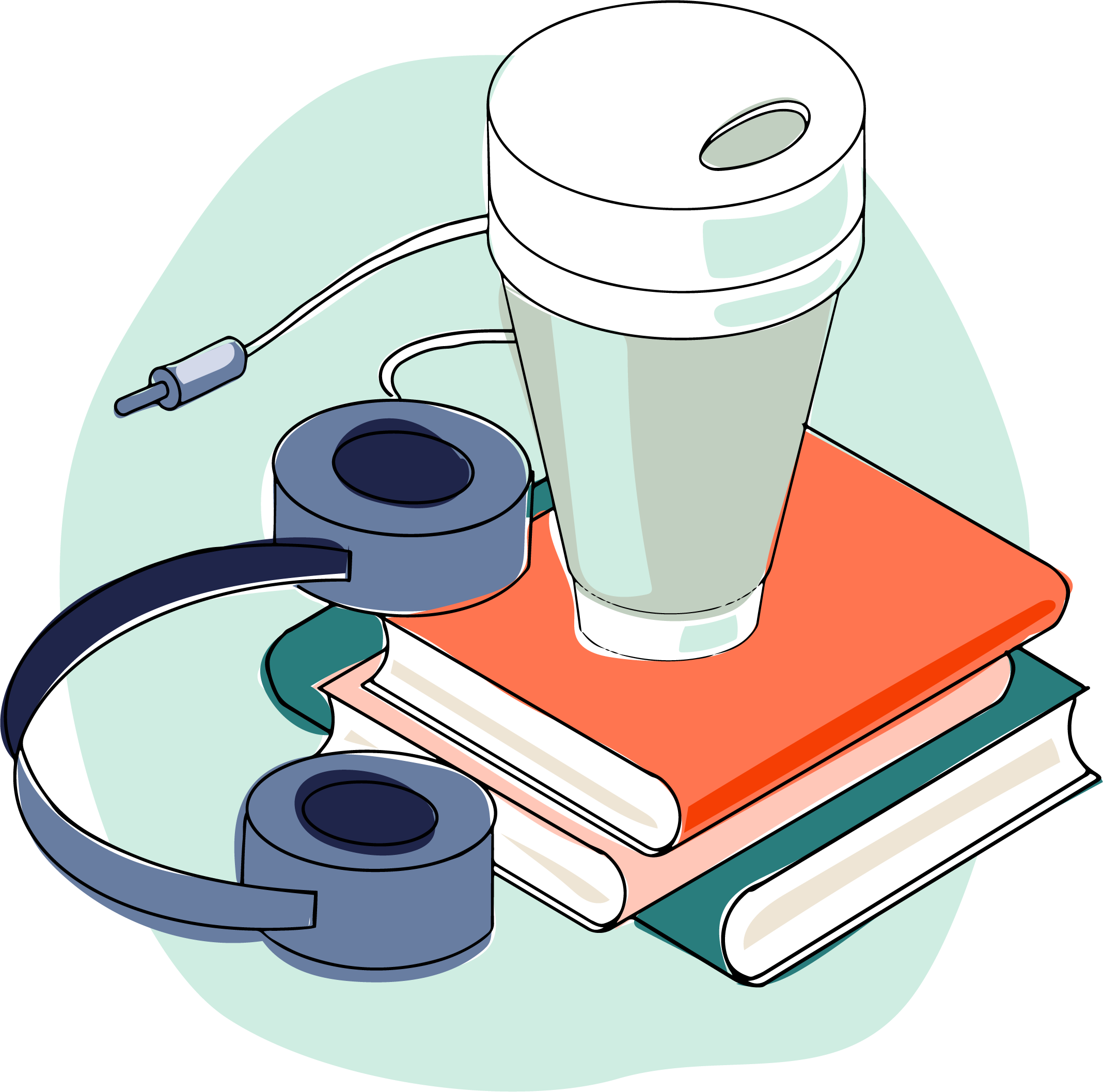NTNU Discovery awards millions to innovative researchers
New revolutionary ultrasound technology. A smart sensor that automatically monitors the condition of electrical machines. Thursday November 9th, NTNU Discovery awarded NOK one million each to two promising innovation projects developed by researchers and employees at NTNU and Helse Midt-Norge.
Text and photo: Per-Steinar Moen
Toril Hernes, pro-rector for innovation at NTNU, awarded the funds for the NTNU Discovery main projects in Gruva, NTNU’s innovation hub. Two selected projects passed through the eye of the needle out of a total of 11 applicants for the NTNU Discovery main project.
– NTNU Discovery has actually distributed NOK 120 million since 2011, shared among 400 projects. There are quite a few skilled professionals both at NTNU and in Health Central Norway. Today we honor both those who apply to NTNU Discovery, but also those who receive funding, she says.

Jørgen Avdal receives one million kroner for the main project from the vice-chancellor for innovation, Toril Hernes.
Revolutionary ultrasound
The first million was given to the FVD (Flow Vector-Doppler) project, led by Jørgen Avdal and Ingvild Kinn Ekroll at the Department of Circulation and Imaging and with participants from Helse Midt-Norge and industry partner GE Healthcare.
FVD is a new ultrasound technique for imaging blood flows that will make it easier to diagnose cardiovascular diseases.
– The project shows that they are at a advanced stage with an innovative product, they solve a problem and innovate with the commercial aspect present. They have come a long way with verification of the technology, which originates from the world-leading ultrasound environment at the institute, says Hernes on behalf of the jury.
Simpler and more effective diagnostics
Ultrasound measurements of blood flow velocities are used today, among other things, to assess which patients will benefit from an operation to reduce the risk of stroke. Due to the very high blood flow velocities that can occur in areas with vascular disease, it has until now been difficult to automate these measurements, which means that the outcome of an examination is to some extent operator dependent. FVD is a revolutionary technique that allows ultrasound to also be used to measure very high blood flow velocities, making the diagnostic measurements more accurate and easier to reproduce.
For 30 years, researchers have looked at the possibility of such measurements, but now the ultrasound environment at NTNU and Helse Midt-Norge might face a small paradigm shift. Today’s technology is unable to measure the velocity of the blood flows precisely when the blood is moving fast. And an important indicator that the patient is developing a cardiovascular disease is exactly that the velocity of the blood flow increases.
– The ultrasound operator today has to make many manual choices during an examination. This is time-consuming and also introduces variability in the measurements. Two different operators can reach different conclusions regarding the same patient. Our solution will provide guidance on correct positioning and angling of the probe. When the operator has positioned the probe correctly, the ultrasound machine can tell where the highest blood velocities are and make automated measurements. Such measurements hasn’t been reliable until now, says Avdal.
Automatic detection
By means of advanced signal processing and mathematical analyses, the FVD software will give the clinician access to far more detailed and measurable information than is possible today, such as automatic detection and grading of constrictions in the blood vessels. In addition to benefiting patients by providing a more secure basis for decisions about diagnosis and treatment, the technology will provide better workflow for those doing the examinations and save time in the clinic.
The aim of the main project is to prepare the technology for commercial systems through a clinical pilot study, improve the user interface and eventually expand the technique to more areas of use, such as cardiac imaging and fetal diagnostics.

Hossein Ehya at the Department of Electric Energy.
Easier monitoring of electrical machines
Electrical machines and motors are an increasingly large part of our everyday life. Norwegians are buying more and more electric cars, which are transported by the first electric ferries across the fjord, and there are plans to electrify parts of the aircraft fleet as well. AIMSES is a new monitoring system for electrical systems that can detect faults at an early stage in everything from large generators in hydropower plants and wind farms, to electric motors in the transport sector.
– AIMSES has come a long way and have verified that there is potential for the product in the market. The industry have shown interest, they have developed a pilot product and displays clarity in their understanding of the market, writes the jury in its justification.
AIMSES is led by researcher Hossein Ehya and professor Arne Nysveen at the Department of Electric Energy at NTNU. The product has been in development since 2018 and has been tested in several Norwegian hydropower plants in recent years. They have previously been granted NOK 200,000 from the NTNU Discovery preliminary project and NOK five million from the Research Council of Norway to look into verification and commercialisation.
There are sensors to measure the condition of such machines on the market today, but the challenges are that they often have to be installed inside the machine itself (with subsequent downtime) and are dependent on good historical data to establish the threshold values for when the system should report that something is wrong. AIMSES is much easier.
From days to seconds
– The advantage of AIMSES is that we can reduce the inspection time from days to seconds. The sensor can be installed on the outside of the machine, so it is not necessary to stop operation during installation. With the help of artificial intelligence, we get detailed information about the type of error, where the error is located and whether the machine should be stopped. Our algorithms can be used in all electrical machines for all applications without the need for historical data. The system also provides detailed analyses to the end user, which do not need to be reviewed by experts, says project manager Hossein Ehya.
Easier installation without downtime, as well as better data for when there is a need for maintenance and possible replacement, will in the long run provide significant savings by using AIMSES, the researchers behind the sensor and software believes.
AIMSES has been tested in several Norwegian hydropower plants, but the team envisions far more areas of use, including in electrical transport systems, wind farms and the oil and gas industry.
Hossein Ehya says that the support from NTNU Discovery will be used to commercialise the product. The aim is to establish a company during 2024 and deliver the product to the market in 2025.
Other news
New millions for staff and students
A big awards evening with the granting of main project funding from NTNU Discovery during the Tech, Hugs and Rock'n'Roll event at Digs on Thursday, June 5.
Fifteen minutes in the dragon’s den
You have 15 minutes to convince the NTNU Discovery jury that your project is worthy of main project funding.
Contact:
Project Manager
Jan Hassel
Email: jan.hassel@ntnu.no
Telephone: +47 906 53 180
Office: Main building
Håvard Wiebe
Email: havard.wibe@ntnu.no
Telephone: +49 414 73 768
Office: Main building

Ta idéen din videre



